What is IaaS, exactly? What makes it different from other cloud services like PaaS and SaaS?
Unlike PaaS, which offers a complete environment for deploying apps, and SaaS, which provides complete software solutions, IaaS only gives you access to bare-bones virtual machines, storage, networking, and computing power.
Still confused? Don’t worry. You’ll understand the differences between them by the end of this post. With 91% of companies at least partially moving to the cloud, this basic understanding is crucial.
Let’s explore what IaaS is, nail down how it differs from other cloud services, and check out some real-world examples of it in use.
What Is IaaS in Simple Words?
IaaS (Infrastructure as a Service) refers to rentable hard drive space or computing power (e.g. CPU, RAM) from internet-connected computers.
You can use these services to host a business app in the cloud, process large amounts of data, or even host your website.
In most cases, you rent cloud computing infrastructure on a pay-as-you-go basis by the hour. Instead of a locked monthly package that includes various services, you can single out what you need at any given moment.
For example, you can add dozens of virtual machines to process a new data set for just a few hours. You don’t need to commit to or pay for services you don’t use.
It’s also a good option for relatively stable ongoing use cases, where demand can sometimes fluctuate sharply. For example, you can use it to host your in-house CRM or other applications. It’s easy to scale it up or down based on usage and demand changes—like during a busy season.
An Example of IaaS: Amazon EC2
Amazon EC2 was one of the first cloud computing services launched to the public in 2006. It lets you create instances (virtual machines) in 77 different data centers across the globe.
The instances are flexible—without a default operating system or control panel—so you can customize them to suit your needs, whether that’s testing your software on multiple OSes, hosting a website, or processing big data.
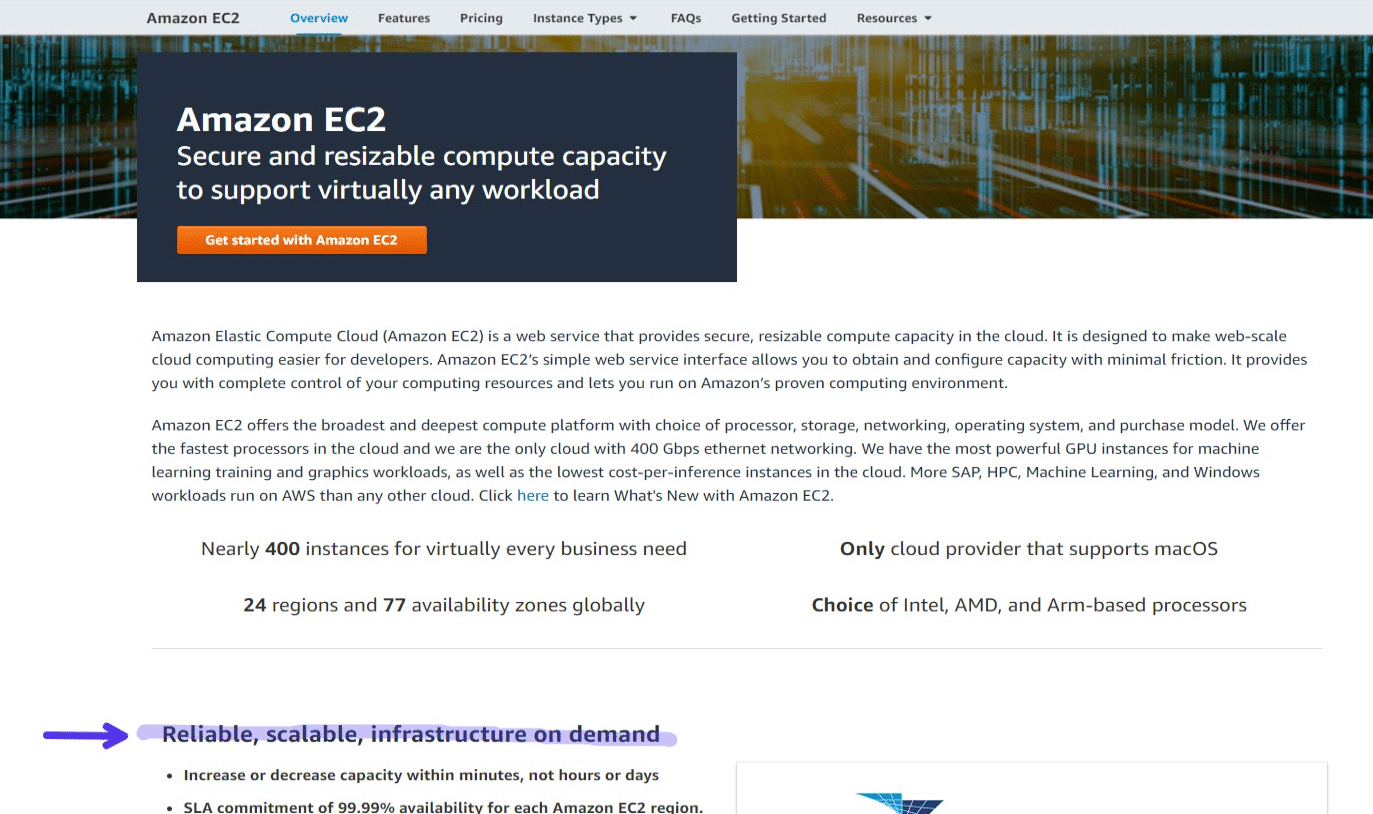
This customizability is what makes it an IaaS service. It’s not a complete, packaged solution, ready for deployment or use. You need to set up the server environment before you can use it.
To this day, EC2 is one of the most popular services from leading cloud service provider AWS, and all significant competitors offer similar options.
By now, you should have a basic understanding of IaaS, but you might not fully understand how it’s different from SaaS and, in particular, PaaS.
Let’s compare them and highlight their differences.
IaaS vs PaaS vs SaaS: What’s the Difference?
Infrastructure as a Service (IaaS) only offers the basics, such as storage and computing, with some security and scaling tools. It’s merely a ready-made software application for rent. A PaaS service, on the other hand, is a complete platform for app deployment.
The easiest way to fully grasp the difference between them is by comparing some examples.
We already covered AWS, so let’s use Google’s cloud services to make the comparison.
Google Compute Engine is one of Google Cloud’s primary IaaS services. You can rent virtual machines of various types depending on your needs.
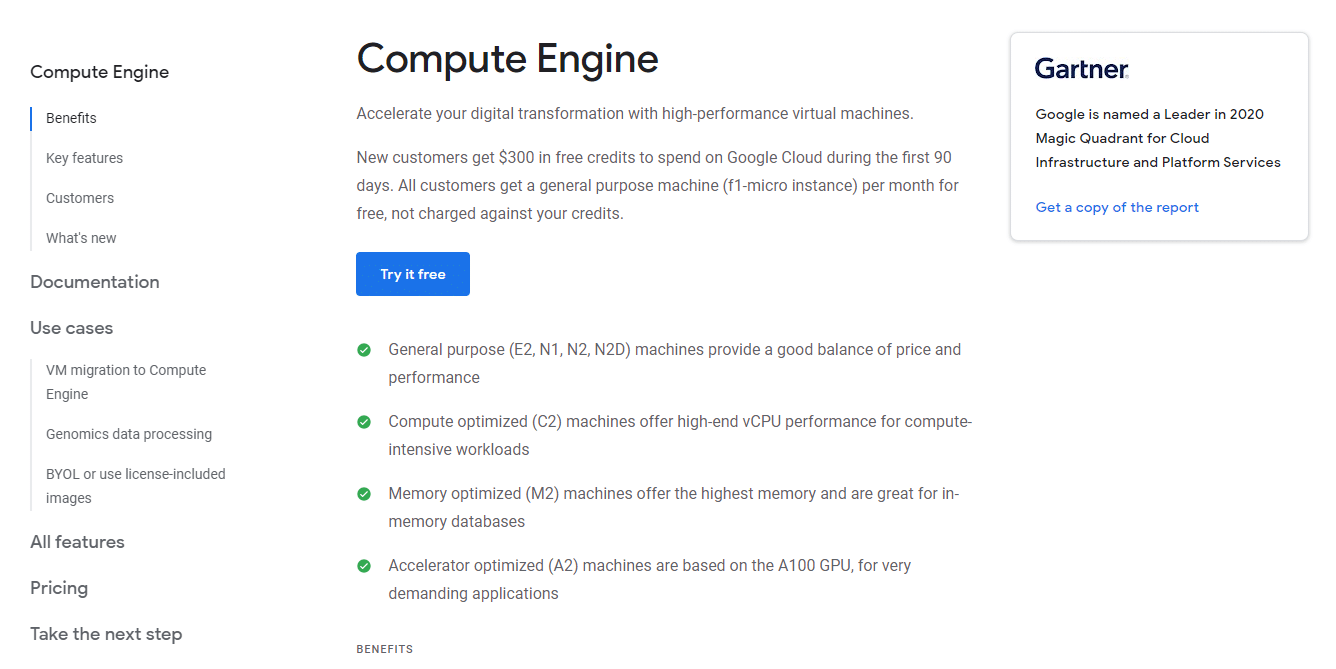
But these virtual machines don’t come with server environments or code libraries pre-installed. They’re blank slates.
All you’re paying for is the computing power and hard drive space—in other words, the infrastructure.
Google App Engine, on the other hand, falls under the PaaS label. Instead of setting up your server environment, you can get straight down to developing and deploying your code.

The App Engine takes care of the necessary code libraries and server software. It delivers the platform you need to host your own (or open-source) apps and software.
Finally, Google Drive is a SaaS product, offering a solution to a specific business problem.
Sure, it’s a cloud service focused on hosting files. But it goes beyond the PaaS level by offering a fully formed user interface with features such as sharing, permission control, and more.

It doesn’t allow running other apps, so it’s not a suitable IaaS platform, but that’s beside the point.
The defining element of a SaaS app is that you can start using it to solve business problems without needing to code anything. All you need to do is sign up (and, if it’s a paid service, pay).
That’s how Google Drive works: you can upload a file, share it, or see your latest Google Docs edits without writing or committing a single line of code.
If you’re still confused, explore the following list of side-by-side examples from each cloud services category:
| IaaS Examples | PaaS Examples | SaaS Examples |
| Amazon EC2 | AWS Elastic Beanstalk | Google Docs |
| Google Compute Engine (GCE) | Google App Engine | Microsoft Dynamics CRM |
| Google Cloud Storage | IBM Cloud Foundry | Salesforce |
| Azure Virtual Machine | Microsoft Azure App Service | Slack |
| Rackspace | Heroku | Zendesk |
| Linode | DigitalOcean App Platform | Google Workspace (Formerly G Suite) |
Okay, but How’s IaaS Different from Web Hosting?
If you’re renting computer space and computing power from an internet-connected machine, how is this different from a regular web hosting service?
There are four main differences:
- Flexibility: You can choose between different storage types (based on access frequency), hardware components, operating systems, and other factors.
- Real-time scalability: Add as many instances as you need in real-time.
- Virtual networking: Simulate a network and communicate between machines without using the public internet.
- Pay-as-you-go model: Only pay for the resources you use for however long you use them. For example, you can add 12 machines for a few hours to deal with a surge and then remove them without committing to a monthly plan.
Cheap shared hosting plans also clump several customers on the same virtual machines, leading to security concerns and unreliable performance depending on other sites on the same VM.
Can you use IaaS for hosting a website? Sure, but it requires more technical expertise than just paying for a managed hosting service, like Kinsta.
Now that you understand some IaaS fundamentals, let’s explore its market share in the broader cloud services market.
IaaS Market Size, Share, and Leading Vendors
In 2019, companies around the world spent over $44.5 billion on IaaS services. Industry experts expect that number to almost double by the end of 2022 to $82.2 billion.

But how big is IaaS compared to the other cloud services types? Let’s look at the data.
The cloud market share between the PaaS, IaaS, and SaaS shows that SaaS is the clear leader, with IaaS in second place, according to the latest data from Gartner.
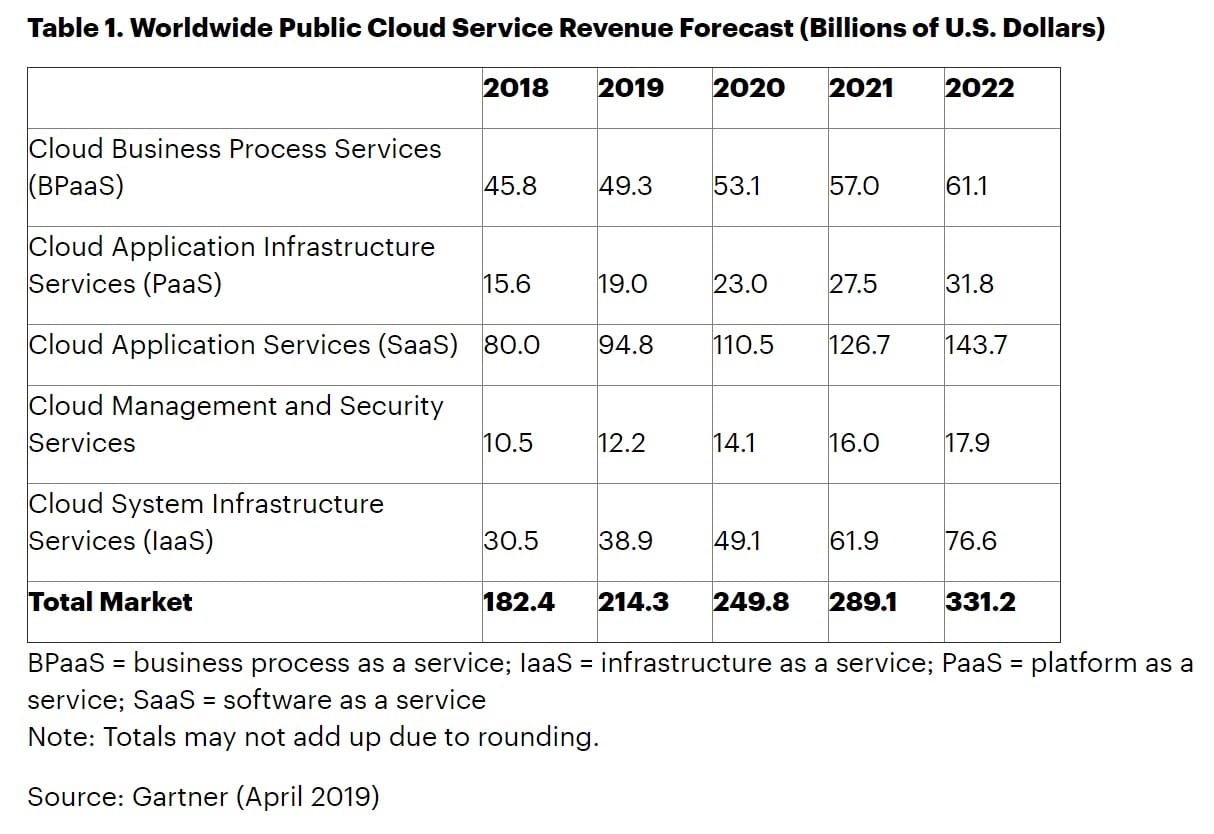
Gartner separates BPaaS (Business Process as a Service) like payroll management tools, communication APIs, and more into a separate category.
While it’s hard to say how much of it falls under SaaS and PaaS with broader definitions, none of those tools falls under the IaaS umbrella. Even if we generously assign half of that revenue to PaaS, IaaS is still more prominent, with a much faster growth rate than PaaS.
Now that we understand the market share of the main cloud computing categories, let’s examine which companies dominate the IaaS marketplace.
Leading IaaS Vendors and Their Market Share
The latest data highlights a handful of significant players controlling over half of the IaaS market in 2020.

According to Statista, AWS’s market share of IaaS in 2020 is at 33%, ahead of Microsoft Azure’s share of 18%, and Google Cloud’s market share at 9%.
The data over the last three years tells a story with three main characters. In the beginning, there was AWS. The head start is evident when looking at market share data over the last couple of years.
AWS solidified its lead and still holds close to a third of the market. But Google and, in particular, Microsoft are growing faster and starting to catch up.
In just three years, Microsoft Azure has increased its market share from 13% to 18%, while AWS didn’t keep up. How do they do this? Microsoft uses its enterprise connections to land billion-dollar deals regularly (like this 2020 Polish government deal and U.S. Defense Department cloud deal).
If you only look at this graph, IBM (AI innovator and enterprise cloud powerhouse) appears almost irrelevant. It seems like Microsoft and Google gobbled up IBM’s share, which has dropped below 7% and is now grouped in with “other” companies in the latest reports.
But according to IBM’s official earnings report in the 3rd quarter of 2020, it logged $4.9 billion in income from cloud infrastructure services (from a mix of IaaS and PaaS). So it’s still a significant player in the cloud computing marketplace.
Other recent reports show major Chinese companies, Alibaba in particular, with a larger share in 2020.

But the three leading players remain the same (AWS vs Azure & Google Cloud). AWS sits at the throne with almost a third of the market share, Microsoft Azure is flirting with 20%, and Google Cloud is slowly playing catch up.
IaaS Services and Use Cases
IaaS isn’t all about big data processing. There’s a wide range of use cases for the different services that fall under the IaaS umbrella.
For example, you may need long-term storage of digital archive files that you won’t frequently access on custom low-power, low-cost servers.
Below, we explore more IaaS services and their use cases in detail.
Computing (Data Processing, Testing Software, Hosting Apps, Etc.)
You can define the first type of IaaS services as “cloud computing as a service.” Essentially you rent virtual servers or instances of storage and computing power to run applications or other processes in the cloud.
As mentioned before, unlike with a regular hosting plan, you usually follow a pay-as-you-go model and can freely scale as you need to in real-time. With most vendors, you can also opt for monthly plans for predictable payments.
But it goes beyond just the physical hardware. For example, IBM Cloud virtual servers include auto-scaling, cloud security, and compliance tools.
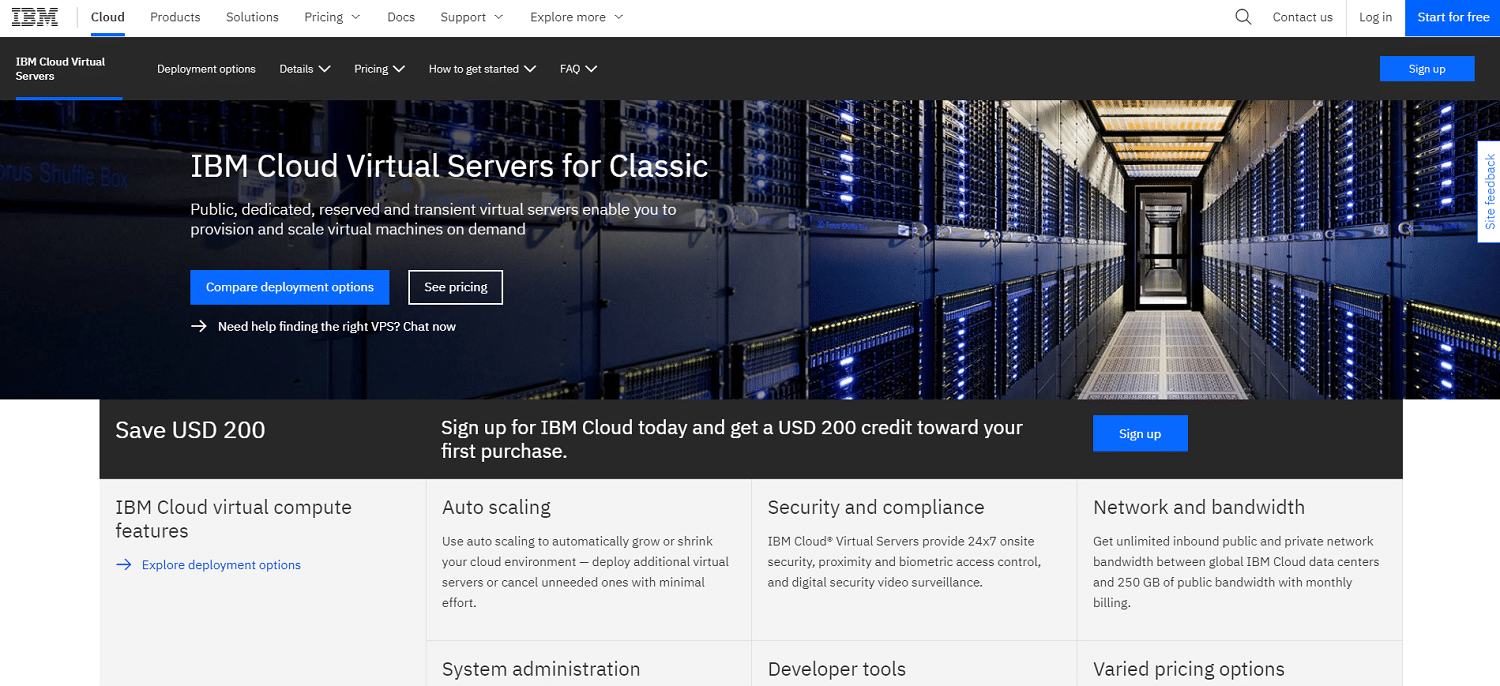
You can also easily tie this service into any of IBM’s other PaaS or SaaS offerings, like data warehousing or AI.
Website Hosting
Even for “just” hosting a website, IaaS providers stand out. Big IaaS vendors are among the leading web hosts in the world.
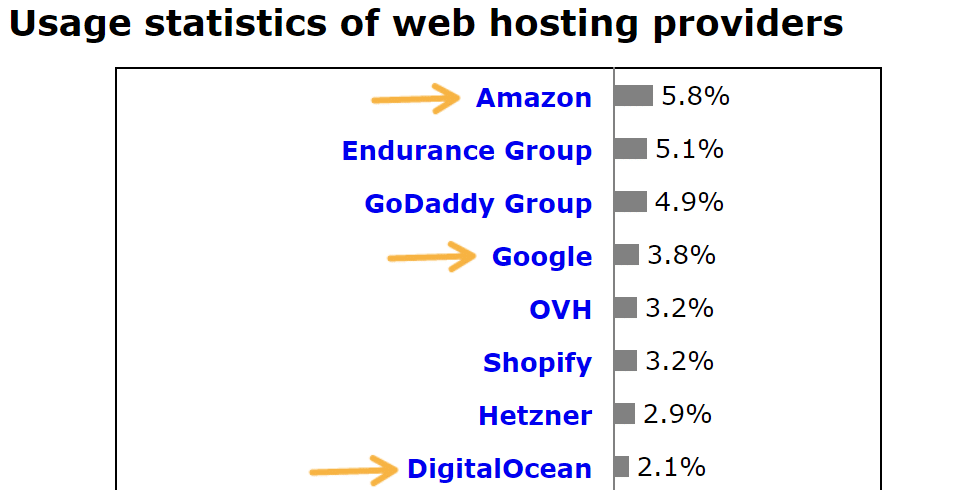
In January 2021, Amazon was the #1 hosting provider in the world. It powers 5.8% of all indexed websites on the Internet.
But why do so many people choose an IaaS provider for basic web hosting?
There are a few reasons. Firstly, since you don’t pay for hands-on support or specific environments, it tends to be cheaper, especially at scale. So, for agencies and internal company departments that manage a portfolio of websites, IaaS is often the ideal choice.
Also, if you run a heavy application or have billions of monthly visitors, a regular web hosting service might struggle to deliver the stability you need. With IaaS, though, you can automatically scale to meet fluctuating usage.
You can also customize the virtual machine to optimize the speed and performance of your website. Of course, you’ll struggle to set up a proper server environment without appropriate expertise.
Storage (File Management, Backups)
You can classify the second IaaS services category as “storage as a service.”
With computers and digital files existing for decades, storage and file management have become more difficult for large companies. Every time you upgrade your computers and systems, exporting archives and data becomes more labor-intensive.
Luckily, an IaaS storage service, like Amazon’s Simple Storage Service (or Amazon S3), can help.
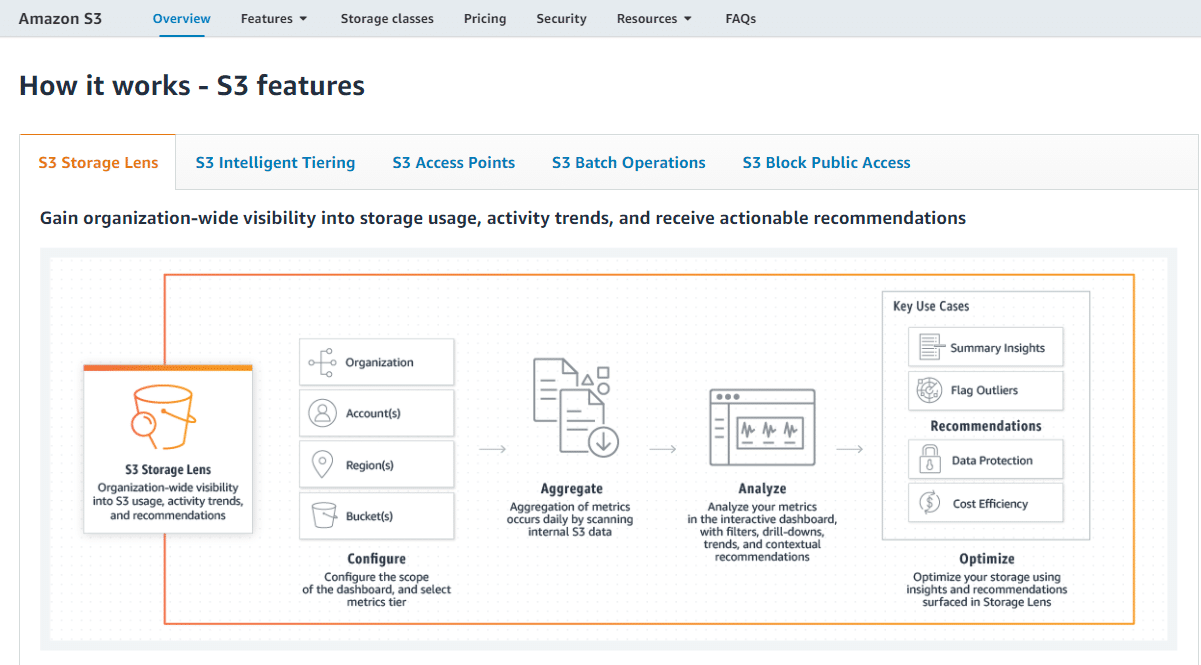
It’s an IaaS solution for storing files and documents in the cloud. You can manage public access to files, control the server location, categorize files automatically into “buckets,” and more.
Long-Term Storage (Archiving)
One helpful feature of S3 (and similar storage IaaS services) is that you have multiple storage tiers. For example, you can choose super cheap, slow-access storage, also known as cold storage, if you imagine you won’t need frequent access to your data.
If you want to archive files just in case you ever need them in the future, S3 Glacier is a good option.
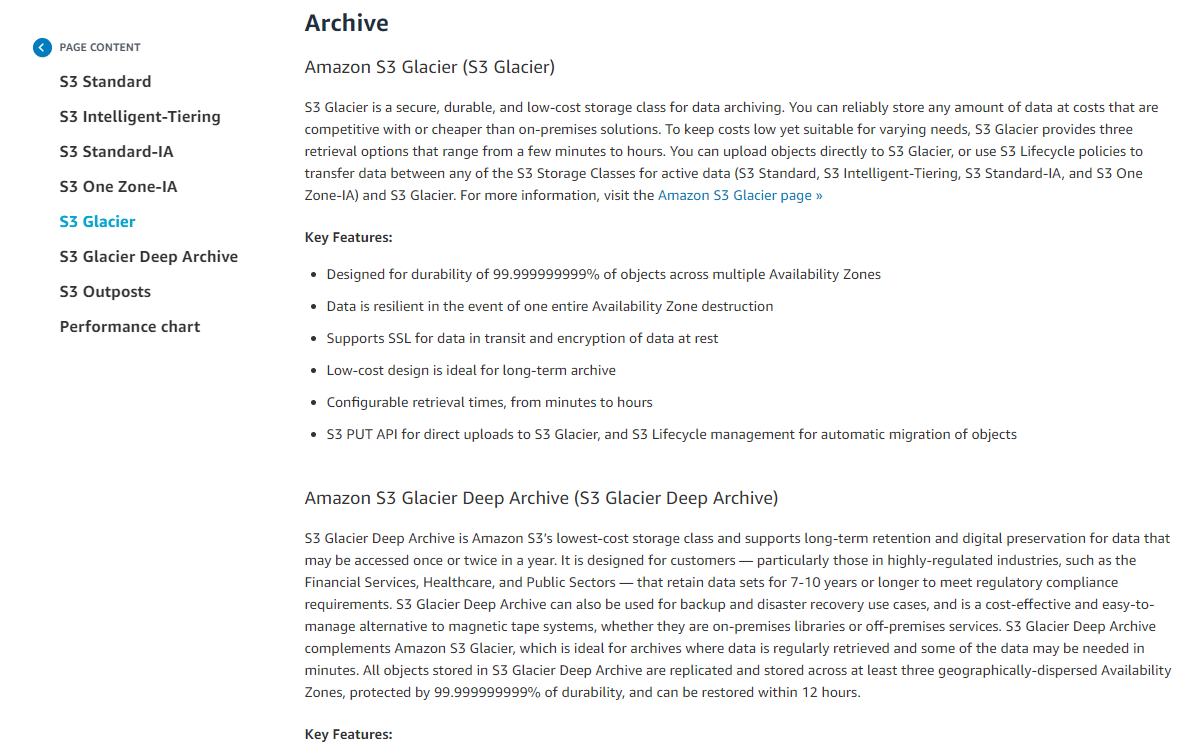
Networking Services
Networking is the third layer of IaaS services. It’s connected (get it?) to the overall usability of the other products.
For example, using virtual networks, you can create a hybrid cloud that uses both on-site machines and virtual machines for the same purpose.
Even if you don’t have a single physical server yourself, IaaS machines come with built-in networking services. With a virtual WAN and unique IP addresses, you can communicate between virtual machines without connecting to the public internet.
Modern providers also offer load balancing, firewalls and real-time security, and WAN optimization.
Largest IaaS Providers and the Services They Offer
Now that you understand a few IaaS basics, let’s take a closer look at the leading providers and what they offer.
AWS
On its website, AWS tends to package its IaaS offerings into different PaaS use cases.
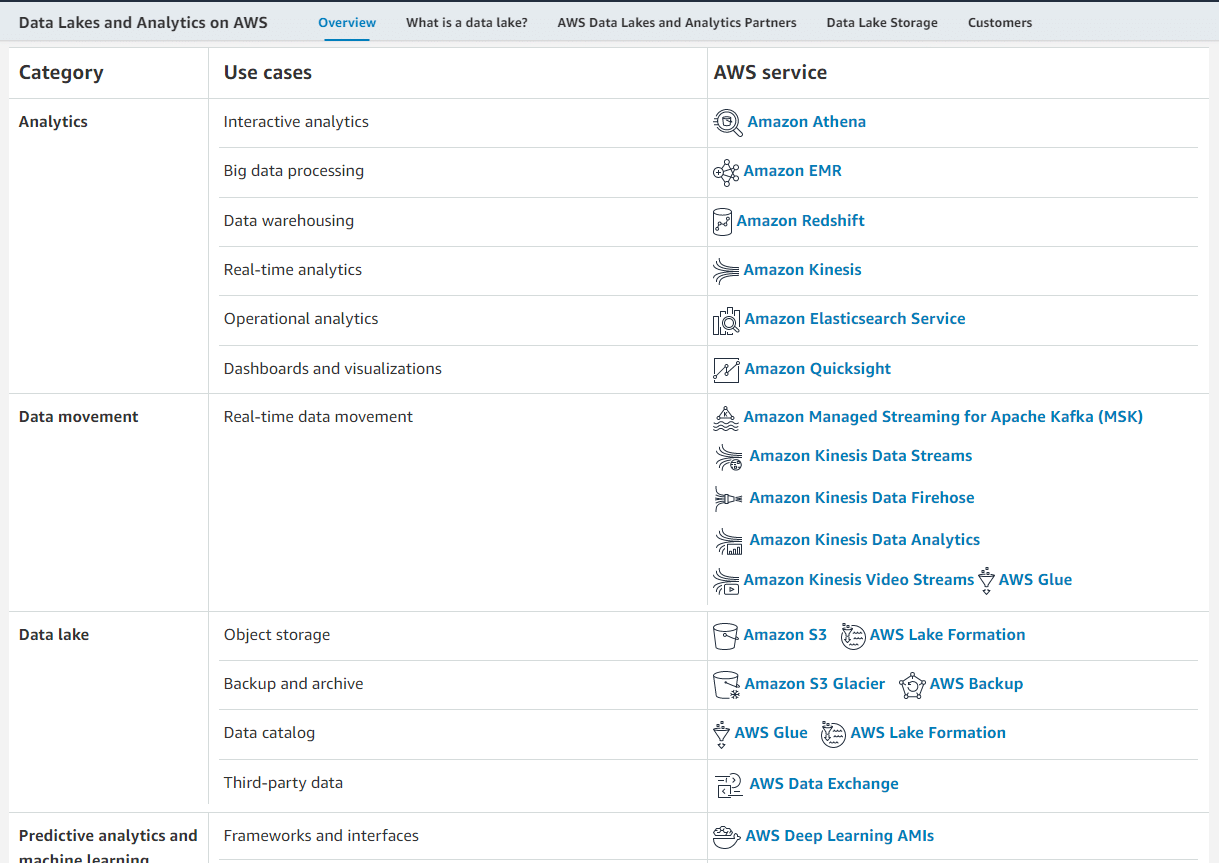
But of course, it lets you rent the underlying computing power. And that’s often all you pay for, even if you use a PaaS solution like Elastic Beanstalk.
As the original innovator in public cloud computing, it has you covered from computing to long-term storage and networking.
| Computing | Amazon EC2 |
| Storage | Amazon S3 |
| Archiving & Backups | Amazon S3 Glacier |
| Security | Firewall and real-time threat detection |
| Private & Hybrid Cloud | VMware Cloud on AWS, and AWS Outposts |
| Networking | AWS PrivateLink (internal data transfer within a virtual network, no public internet usage) |
| Data Centers | 109 data centers in 40+ availability zones |
The on-demand prices vary greatly depending on the virtual machine specs and data center location. The cheapest instance (t4g.nano with 0.5 GB memory) starts at $0.0028 per hour.
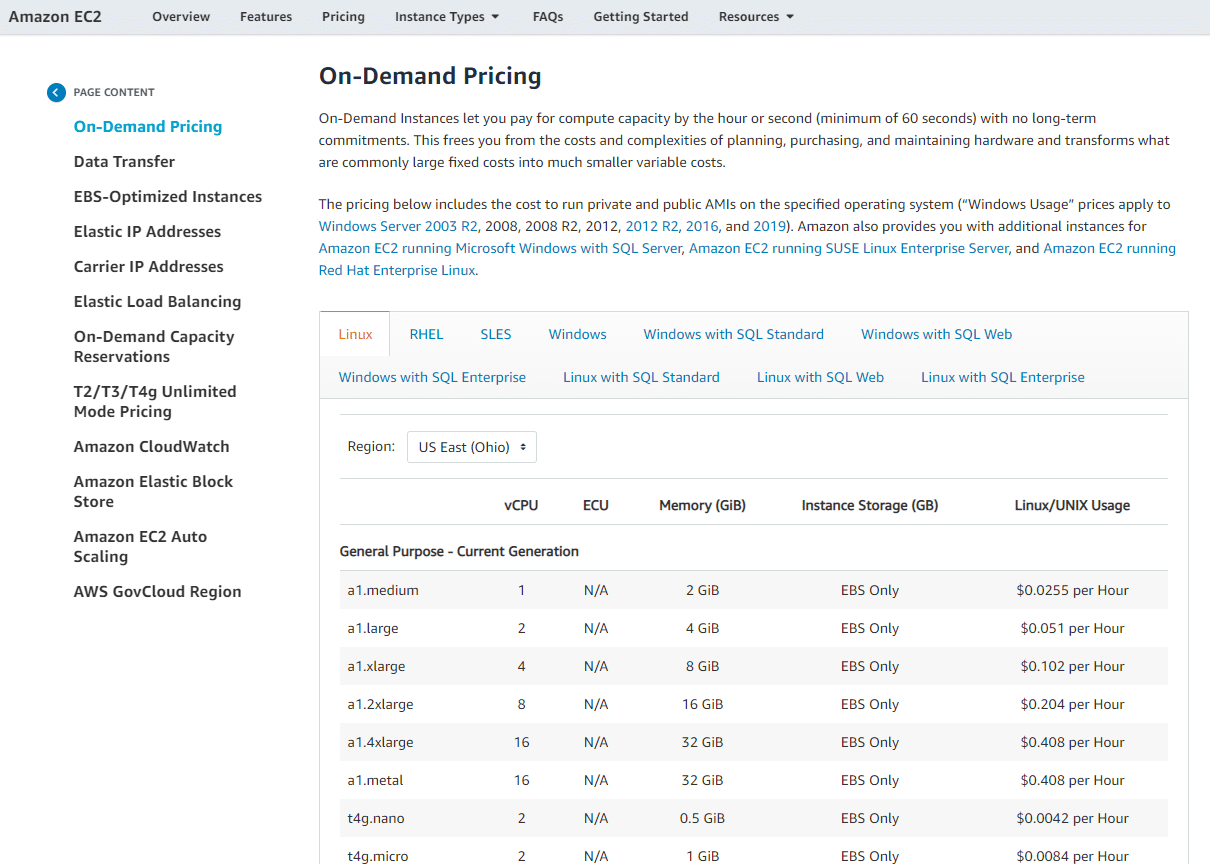
Should the need arise, you can add or remove machines in real-time to adjust the load.
Google Cloud
Google Cloud offers a wide range of cloud services, from IaaS to PaaS and even SaaS.
With Google Workspace and intelligent Google-powered search in your private cloud, it’s an excellent option for companies transitioning to the cloud across the board.
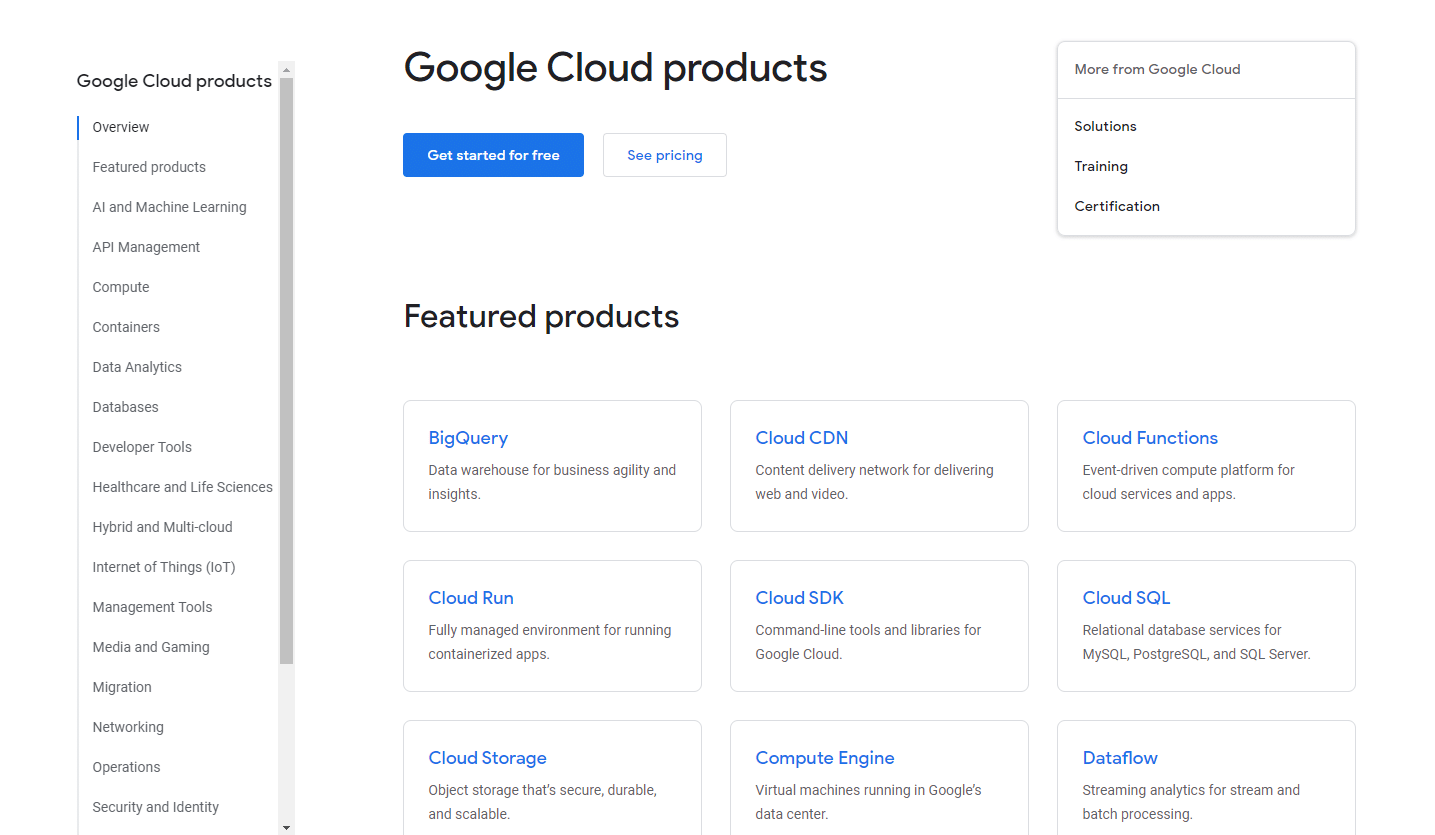
But looking at fundamental infrastructure, how does Google compare to AWS?
| Computing | Google Compute Engine (GCE), Bare Metal |
| Storage | Google Cloud Storage |
| Archiving & Backups | Cloud Storage – Archive |
| Security | Firewall and real-time threat detection |
| Private & Hybrid Cloud | Virtual Private Cloud / Anthos |
| Networking | Virtual Private Cloud (internal data transfer within a virtual network, no public internet usage) |
| Data Centers | 142 data centers in 73+ availability zones |
Google Cloud covers all the same fundamental bases and even offers many data centers and locations. 142+ data centers make it ideal for high availability or disaster recovery—perfect if you have a 99.99% service SLA.
If you’re more concerned about your bottom line, though, you might want to know more about GCE prices.

The prices per GB hour of memory are comparable with AWS, at least for the E2 machine type. At a 1-year commitment, the prices are considerably lower.
With a 3-year commitment, you get a 56% discount and only need to pay $0.001316 per GB hour.
If you want to compare the two options in more detail, you can read our full post on Google Clouds vs AWS.
Microsoft Azure
Microsoft, the second-largest IaaS vendor globally, also offers a wide range of robust cloud services.
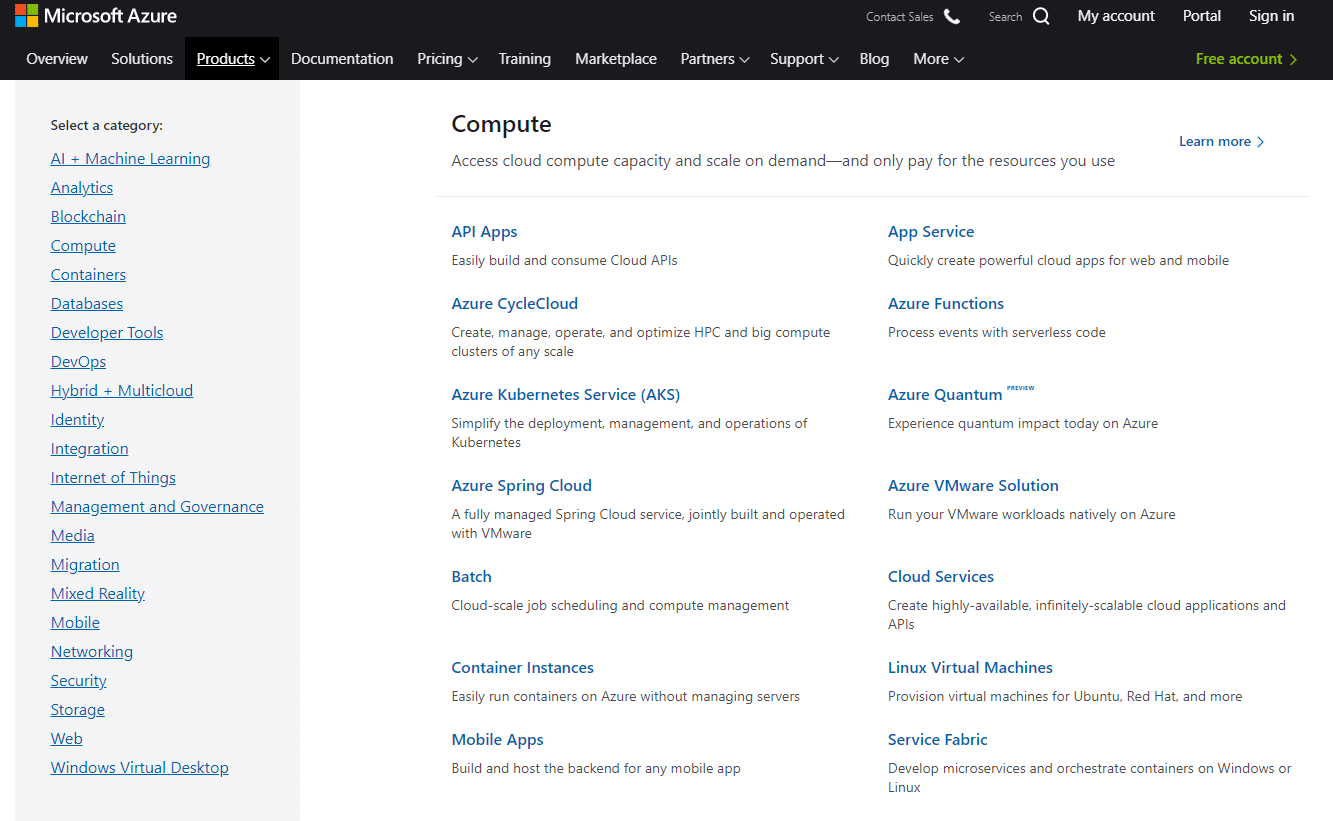
Unsurprisingly, Azure has all the IaaS bases covered as well.
| Computing | Azure Virtual Machines (Linux & Windows) |
| Storage | Azure Files |
| Archiving & Backups | Azure Archive Storage |
| Security | Firewall and real-time threat detection |
| Private & Hybrid Cloud | Azure Private Cloud |
| Networking | Virtual WAN, VPN (internal data transfer within a virtual network, no public internet usage) |
| Data Centers | 100 data centers in 58+ availability zones |
With reliable virtual machines, storage, archiving, and security protocols, it’s a great cloud platform to build on.
But what about price? Can it compete with Google and Amazon?
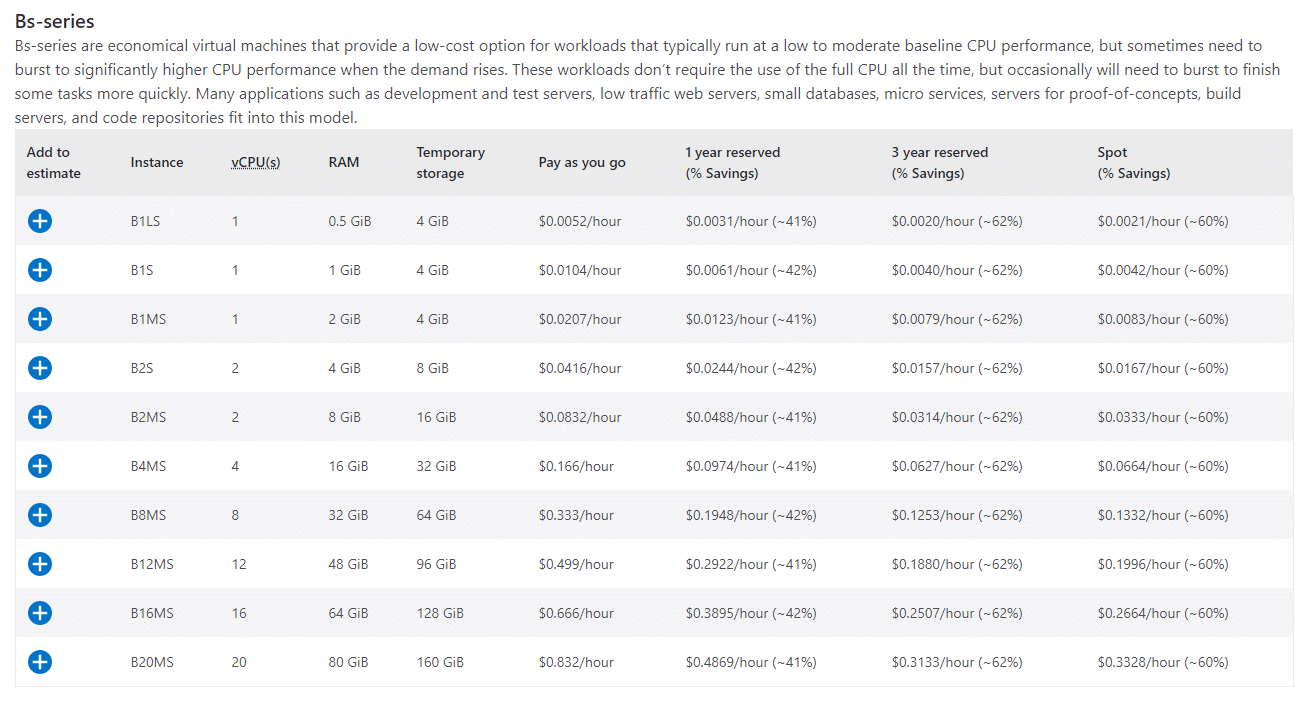
The cheapest instance, with 0.5 GB RAM, costs slightly more than its AWS equivalent at $0.0052 per hour.
But it includes up to 4 GB of storage, unlike AWS, where you need to use an additional storage service.
You can also reduce the prices by committing to Azure for a multiple-year fixed-price deal.
IBM Cloud
Sure IBM Cloud hasn’t been able to keep up with the “big three” in terms of growth, but what about its actual products?
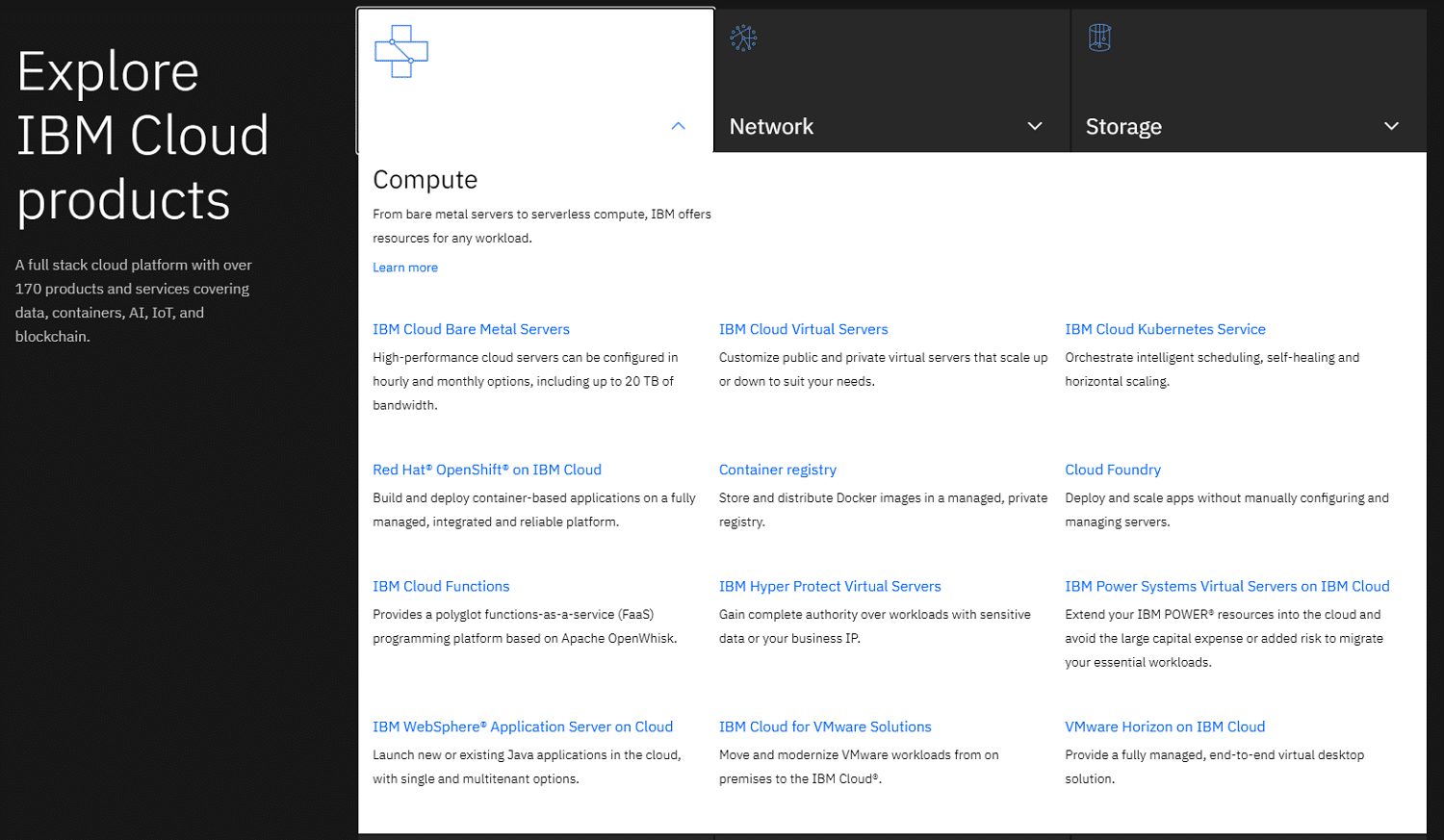
IBM offers robust cloud infrastructure in all categories, just like its major competitors.
| Computing | IBM Cloud Virtual Servers, IBM Cloud Bare Metal Server |
| Storage | IBM Cloud Object Storage |
| Archiving & Backups | IBM Cloud Storage (Cold Vault) |
| Security | Firewall and real-time threat detection |
| Private & Hybrid Cloud | IBM Virtual Private Cloud |
| Networking | IBM Virtual Private Cloud (internal transfer of data within a virtual network, no public internet usage) |
| Data Centers | 60 data centers in 18+ availability zones |
You can set up a virtual machine, store or archive files, and much more. But when it comes to price, IBM struggles to compete with the industry leaders.
A single 4 GB VM will cost you $0.084 per hour, almost as much as a new Google N2 instance with 8 GB RAM.
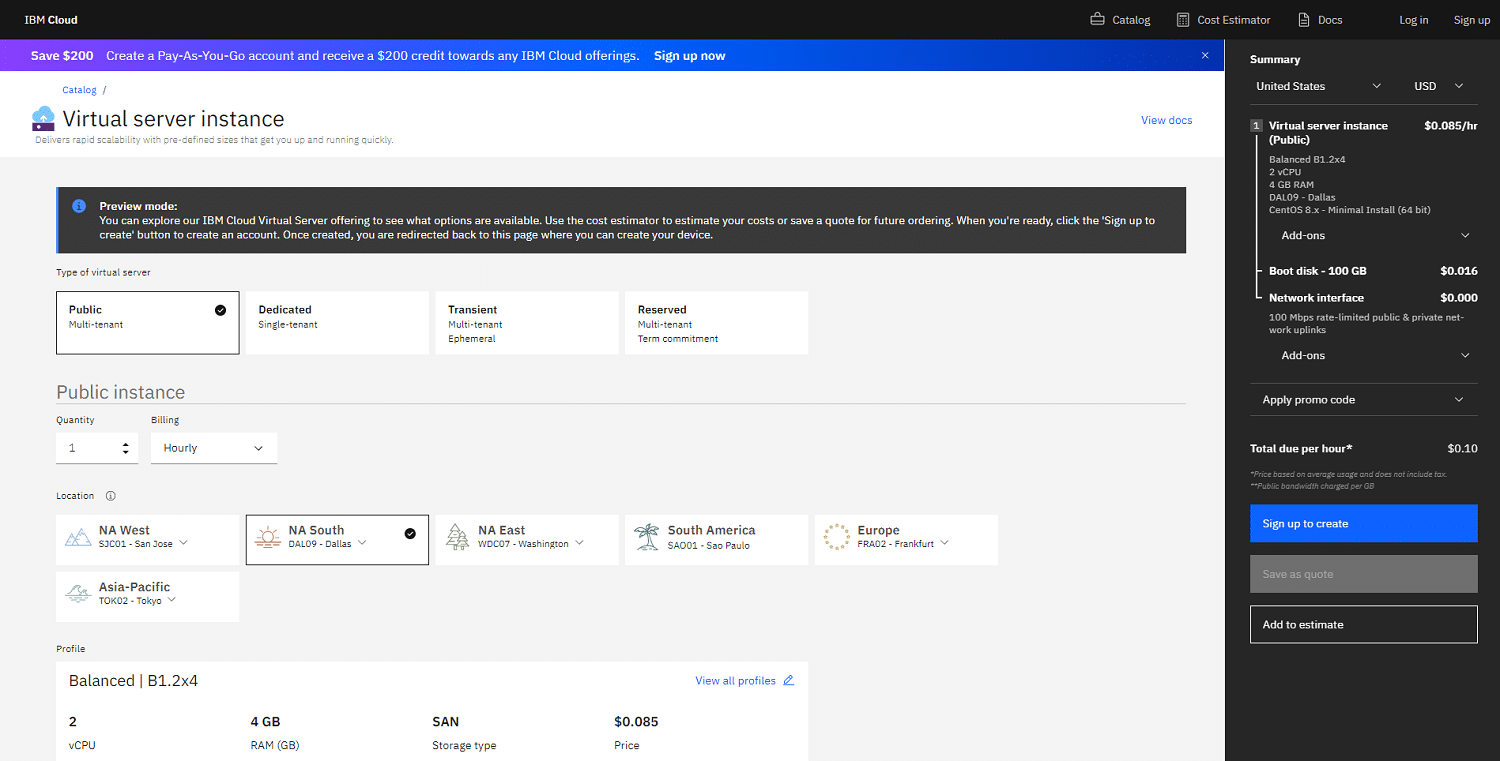
And with “only” 60 data centers in 18 zones, it’s the least suitable option for distributed clouds.
Still, IBM’s main strength doesn’t lie in the physical infrastructure itself, but its PaaS and SaaS solutions like Watson AI.
So whether it’s the right choice for you depends on what you’re looking for.
Summary
IaaS offers you the full scale of an international digital enterprise, with as much storage and computing power as you need at the click of a button.
You can use it for processing data, testing your software, or even hosting your website. But it can be challenging to set up and get started if you’re a complete beginner.
If you want a web host that utilizes cutting-edge cloud technology, you can use our free migration service to move your site to Kinsta today.
Our accessible application hosting, database hosting, and managed WordPress hosting plans rely on cloud infrastructure from Google Cloud, without the headaches (we use the latest C3D compute-optimized VMs to optimize performance).


